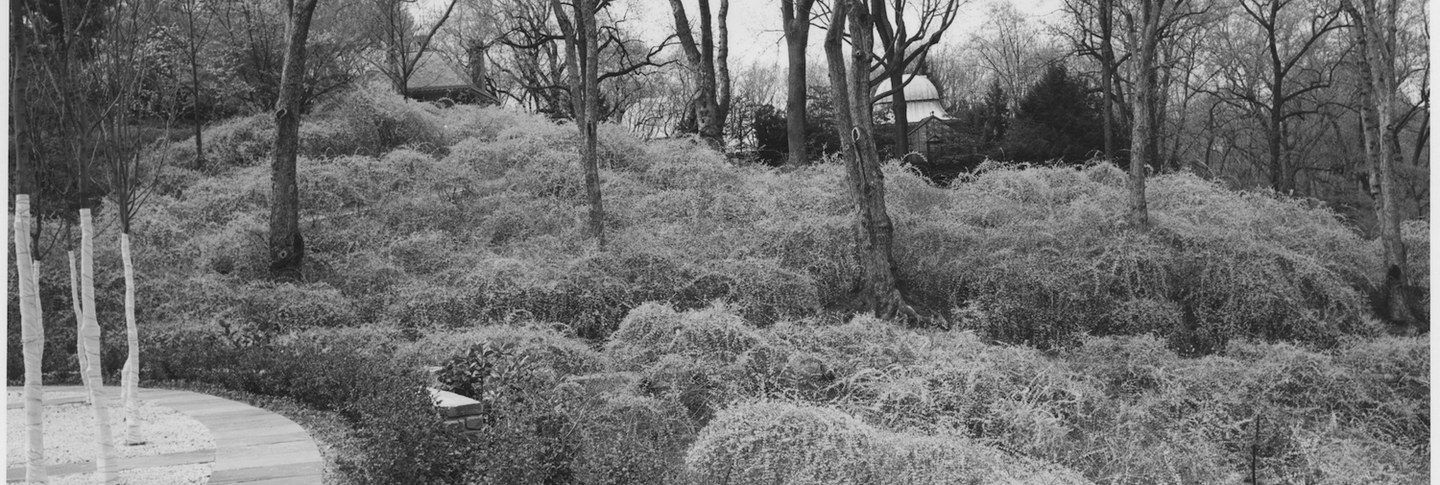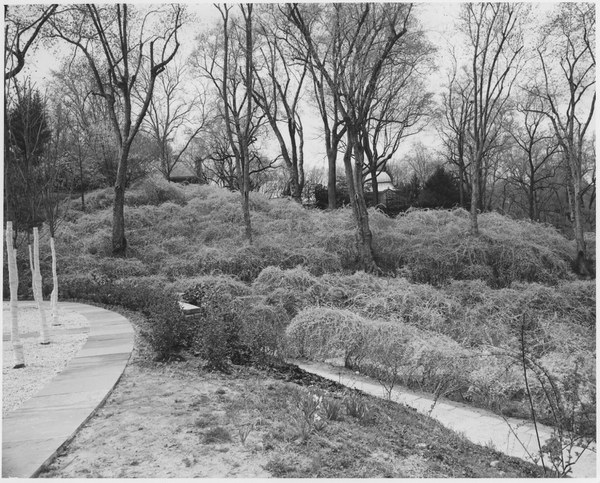The Forsythia Dell is one of a few garden areas that Beatrix Farrand designed to showcase a single planting. The forsythia bushes in this garden area stretch down one hillside, across a valley, and up into Dumbarton Oaks Park to the north. Originally covering a full acre, the Forsythia Dell was the largest, most expansive, and most dramatic of the single bloom garden areas that Farrand planted. Unlike Cherry Hill or Crabapple Hill, which featured different varieties of similar trees, the Forsythia Dell featured only one variety of forsythia. Identical shrubs and blooms magnified the effect of flowers pouring down the hillside.
To help shape the forsythia to the contours of the landscape, Farrand recommended extensive yearly pruning. She also planted silver maples at the top of the hill, to add height above the mass of yellow flowers. In the intervening years, the silver maples have been replaced with tulip poplars, and pruning occurs less frequently.
The Forsythia Dell features a small oval terrace halfway down the hill toward Dumbarton Oaks Park. On the terrace, Farrand placed a limestone urn and pedestal, adapted in the 1930s from an Armand Albert Rateau design. Two limestone benches flank the column. The benches, designed in 1937, are called the “Two Friends,” and they are dedicated to Robert and Mildred Bliss’s close friends, William and Caroline Phillips. At the base of the hill is the Forsythia Gate, a stone archway designed by Ruth Havey for Beatrix Farrand in 1937.

